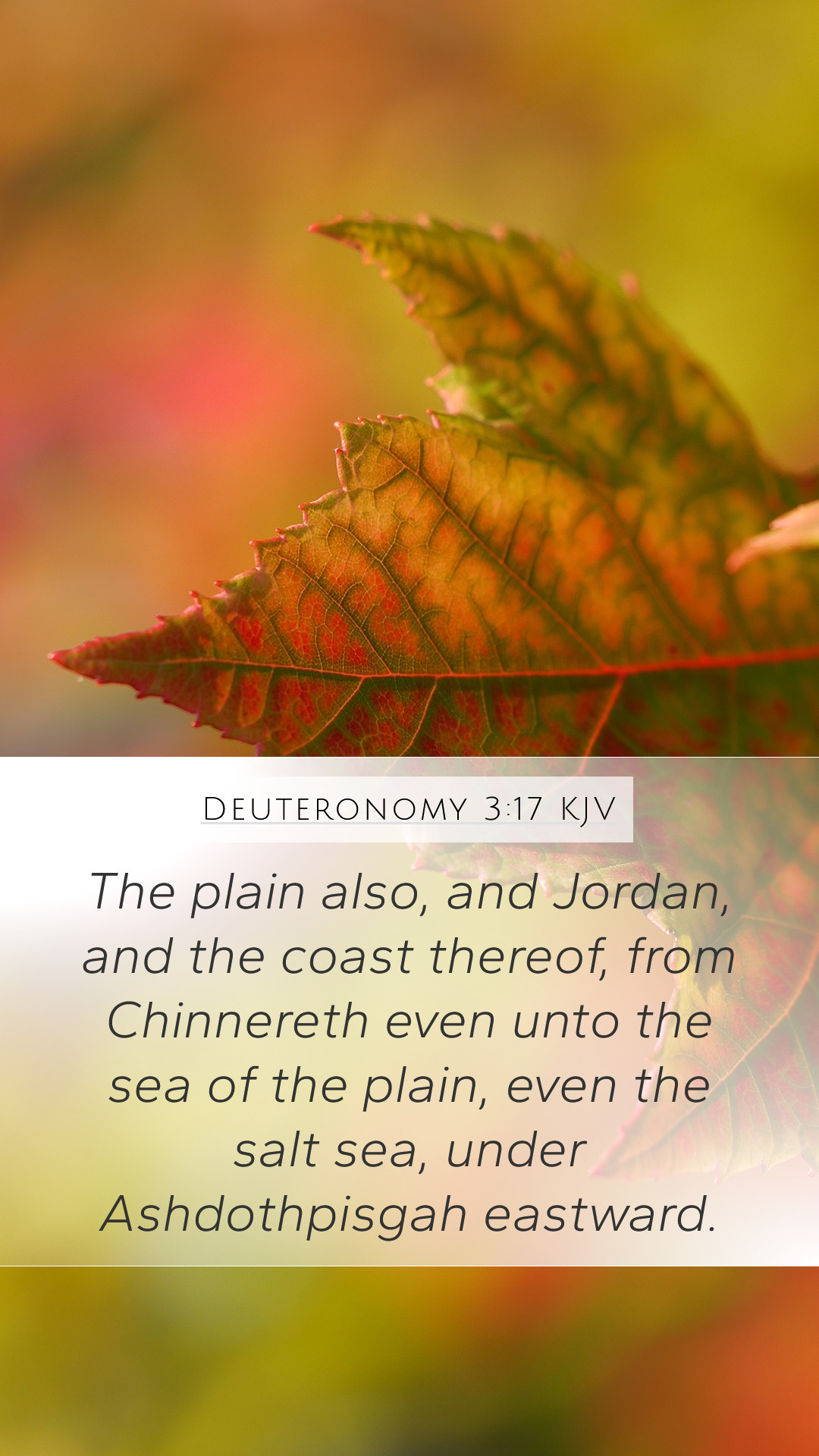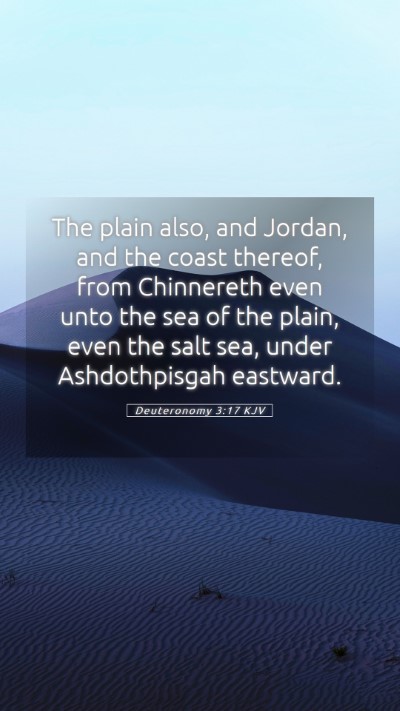Understanding Deuteronomy 3:17
Verse: "The plain also, and Jordan, and the coast thereof, from Chinnereth even unto the sea of the plain, even the salt sea, under Ashdoth-pisgah." (Deuteronomy 3:17)
Overview
Deuteronomy 3:17 describes a geographical region that was significant for the Israelites during their wanderings in the wilderness. The mention of these locations provides insight into God’s promises and the future inheritance of the land for the Israelites. This verse encapsulates the transition from wilderness wandering to entering the promised land, emphasizing the fulfillment of God's promises.
Bible Verse Meanings
Through the lens of Bible verse interpretations, we can glean several layers of meaning from this passage:
- Geographical Significance: The verse outlines key locations associated with the Israelite nation, establishing physical landmarks that would set the stage for future settlements and divisions of land.
- Historical Context: Understanding the context of Israel's journey helps readers appreciate the weight of God's promises and their eventual fulfillment.
- Theological Implications: This verse implies the sovereignty of God in guiding and providing for his people as they move toward the realization of their inheritance.
Bible Verse Commentary
Albert Barnes notes that this verse includes geographical references which symbolize both promise and hope for the Israelites, serving as a reminder of God's guidance. Matthew Henry emphasizes the importance of remembering these places as they represent God’s faithfulness and the continuity of His covenantal relationship with the Israelites.
Key Insights from Commentaries
- Matthew Henry: He highlights that the specified regions reflect the richness of God's bounty and the significance of land in the fulfillment of God's plan for His people.
- Albert Barnes: He interprets the mention of the 'Salt Sea' as a contrast to the promised blessings, illustrating the dichotomy between desolation and hope.
- Adam Clarke: Clarke expands on the geographical description, noting that it serves to provide a clear vision of the territories awaiting Israel as opposed to their current trials.
In-depth Bible Verse Analysis
This verse is rich with a multitude of meaning of Bible verses and can be broken down into theological, historical, and practical applications:
Theological Insights
The mention of the physical locations encourages readers to reflect on the precision with which God fulfills His promises. It demonstrates that God is not only concerned with spiritual matters but also physical realities.
Application to Daily Life
Modern readers can apply the assurance of God's guidance in their own lives. The verse invites one to trust in God’s promises regardless of current circumstances, drawing parallels to personal journeys of faith.
Bible Cross References
In studying Deuteronomy 3:17, several related verses can deepen understanding:
- Genesis 14:3: Mentions the plain of Siddim, indicative of historical battles and God's plans.
- Numbers 34:3-12: Describes the borders of the promised land in detail.
- Joshua 12:3: References the territorial boundaries and conquests in the land.
Conclusion
This analysis of Deuteronomy 3:17 reveals the richness embedded in biblical texts. The geographical references not only serve a historical purpose but also provide profound insight into God's unwavering faithfulness. Through diligent Bible study resources and reflections, believers can continue to explore the depths of Scripture, discovering lessons applicable to their own lives.


